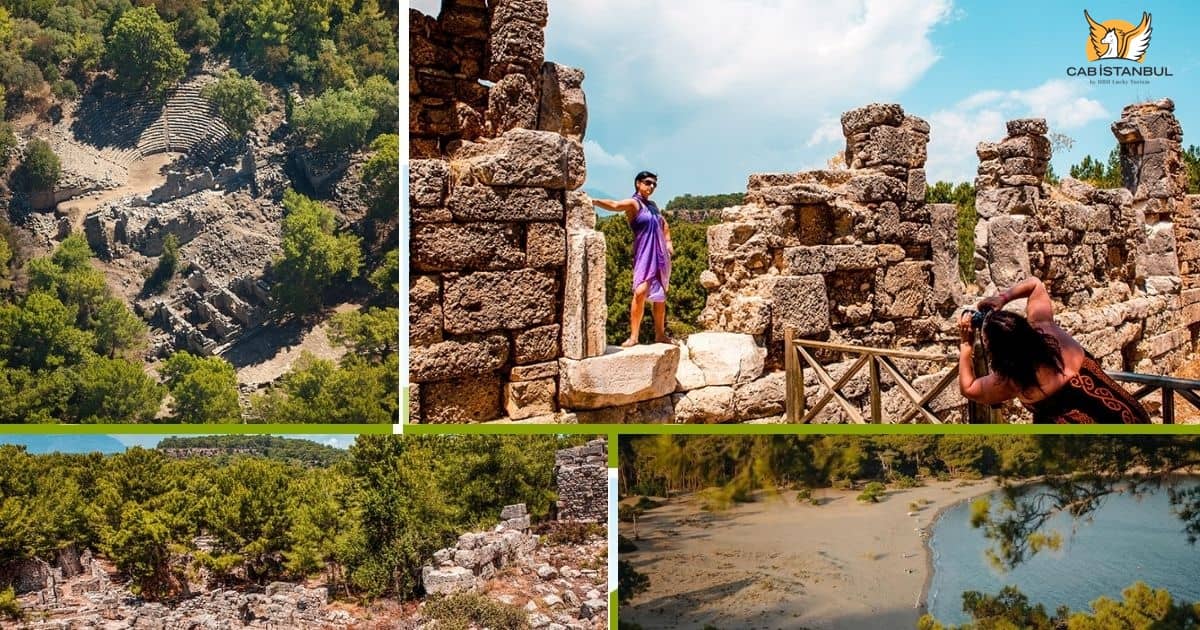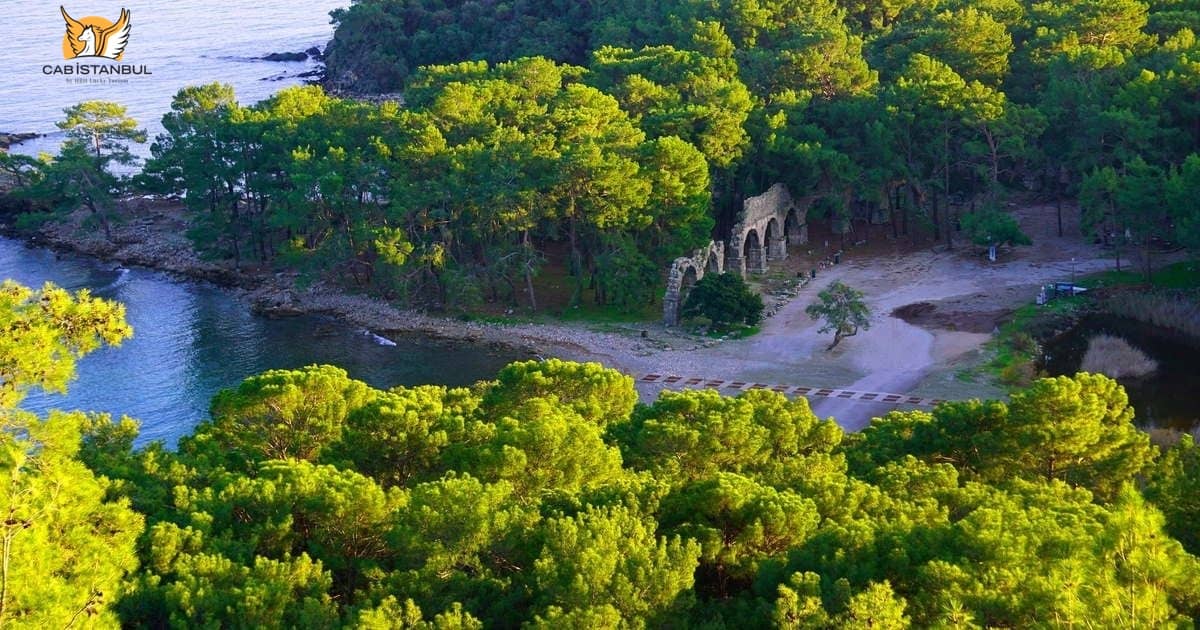Phaselis Ancient City
2025-12-15

Historical Sites Of Antalya Phaselis
Phaselis Ancient City, the captivating historical site nestled along the stunning Mediterranean coast of Turkey. Founded in the 7th century BC by colonists from Rhodes, Phaselis boasts a rich tapestry of history, culture, and natural beauty. This enchanting site, where history intertwines with lush forests and crystal-clear waters, offers a unique glimpse into the ancient civilizations that once thrived here. From its strategic location to its three harbors and remarkable ruins that include theaters, agoras, and baths, Phaselis is a testament to the ingenuity and spirit of its past inhabitants. Whether you're a history enthusiast, a nature lover, or simply in search of peace and inspiration, Phaselis Ancient City invites you on a journey through time. Discover the secrets of this ancient gem, from its fascinating history under Persian, Hellenistic, and Roman rule to its serene, picturesque landscapes that continue to enchant visitors from around the world. Embark on a captivating exploration of Phaselis, where every stone tells a story of glory, conquest, and a civilization that echoes through the ages.
Before planning your next trip, take a look at Cab Istanbul's private transfer services for a seamless start. Consider booking a car with driver from Istanbul before you immerse yourself in visiting Turkey's ancient cities. Many discerning travelers prefer this luxury, allowing them to explore the city's splendor at their own pace. With our skilled English-speaking drivers at the wheel, you not only ensure comfort but also the flexibility and insight of a local.
Antalya Phaselis
Phaselis Antique City
Phaselis is situated in the province of Antalya, a region renowned for its rich history and stunning coastline. The city lies between the Bey Mountains and the shores of the Mediterranean, creating a picturesque setting that captivates every visitor. Its proximity to other tourist destinations, like the modern town of Kemer and the ancient city of Olympos, makes Phaselis a perfect addition to any travel itinerary.
Pamphylia and Lycia-The Tale of Two Regions
Phaselis often finds itself referred to as either Lycia or Pamphylia, given its unique location straddling both regions. Historical records illustrate its vibrant past, from coming under Pers's dominion in the 4th century BC to greeting Alexander the Great in 333 BC with a golden crown. The city's allegiance shifted often, but its most prosperous era spanned nearly three centuries under Roman rule, commencing in 43 BC. A monumental arch still stands today, commemorating Emperor Hadrian's visit in 129 AD.
Phaselis's history is a tapestry of alliances and sieges. Notably, it joined the Kadikoy Council in 451 and, despite challenges like Arab raids in the 7th century, experienced a resurgence in the 8th century. However, its significance waned post the Seljuk siege in 1158, compounded by earthquakes and the port's declining functionality. By the early 13th century, Phaselis was abandoned.
Today, remnants of Roman and Byzantine influences are evident along the city's main thoroughfare, connecting its northern and southern ports. This path leads explorers to a small square, a Hellenistic theater, and the Acropolis. Intriguingly, ruins suggest additions to the theater during the Roman era, with walls hinting at the city's Byzantine fortifications. Nearby, ancient walls from the 3rd century BC and potential temple or tomb remains beckon visitors, while the city's cemetery rests behind the northern harbor.
Phaselis Beach
Phaselis Ancient City Ruins
Explore the Ruins: Walk through the ancient streets of Phaselis, flanked by the remnants of Roman and Byzantine architecture. The city's three harbors, the central agora, the theater, and the aqueducts are just a few of the significant ruins that paint a vivid picture of its past.
Beach Time: After wandering through historical pathways, relax at one of the beautiful beaches that flank the ancient city. The clear, calm waters here are ideal for swimming and snorkeling.
Hike the Lycian Way: For the adventurous, parts of the famous Lycian Way hiking trail run near Phaselis. It’s a wonderful opportunity to experience both the ancient world and the area's natural beauty.
Visiting Phaselis Antique City
To accommodate the influx of visitors year-round and make the most of the daylight, Phaselis Antique City operates on seasonal visiting hours.
Summer Hours (15 April-2 October): The site opens its doors from 08:30 to 19:30, offering ample time to wander through the ruins, relax on the beaches, and capture the beauty of the setting sun against ancient stones.
Winter Hours (3 October-14 April): The visiting hours shift to 08:30 to 17:30, ensuring visitors can still enjoy the site's tranquil beauty and historical wonders even as the days grow shorter.
Ancient City Of Phaselis In Antalya


Write a Comment !